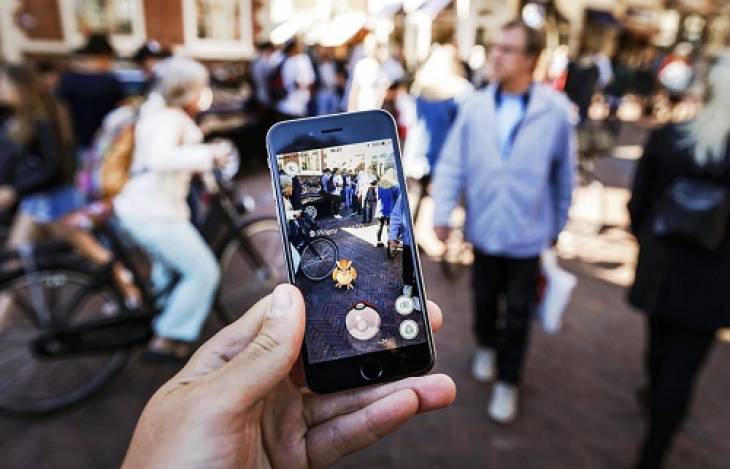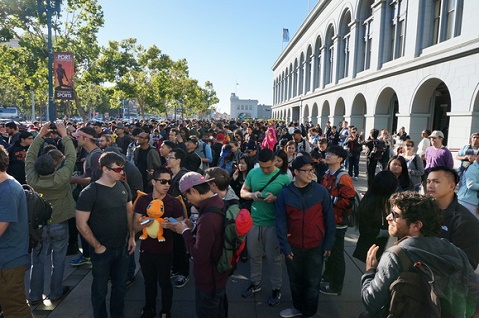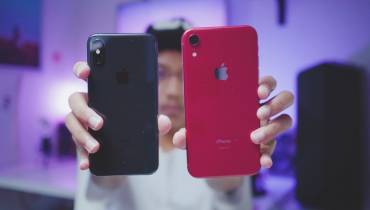What Pokémon Go’s Popularity Reveals About the State of Technology Today

Pokémon Go is all the rage. It’s becoming a cultural phenomenon. If you haven’t heard about Pokémon Go, it is a free-to-play location-based augmented reality monster-hunting mobile game developed by Niantic and published by The Pokémon Company. It was released in July 2016 for iOS and Android devices, and is currently available in the US, New Zealand, Japan, Australia, and now Germany.
It is hard to think of another app that has skyrocketed to such great levels of awareness only a little over a week after it was released. Pokémon GO has reportedly surpassed Twitter’s daily active users, and incredibly sees more engagement than Facebook. It took only two days after it launched to be downloaded on 5 percent of all US Android devices. According to SurveyMonkey, GO is now the biggest mobile game in U.S history.
If you doubt the popularity of the game, all you need to do is spend any time in a public location to see herds of people walking around hunting for Pokémon. The game is arguably the greatest pandemic since swine flu. People can’t seem capable of resisting its allure that entails scintillating adventures to catch Pokémon – the very same fictional cartoon characters popularized by Nintendo games in the Nineties – in the real world.
Blending the Real and Digital Worlds
Pokemon Go's blending of gaming and augmented reality (AR), which is a live view of a physical, real-world environment that is augmented or supplemented by computer generated sensory input such as graphics, sound, video or GPS data, has proved a huge success. The interesting thing about this mixture that weaves the physical and virtual worlds together is that when it involves local cities, towns, markets, shops, restaurants and so on, AR has a profound effect on the way we live, work and play.
For example, there are already stores using a Lure (a virtual object that lures Pokémon to a specific location) in order to get people to their retail locations. After posting a Lure, some restaurants have reported a boost in sales as people try and find a Pokémon in or near those eating establishments.
Another example of the impact of weaving the physical and virtual worlds together involves training. As an article on TD.org rightly observes, there’re huge opportunities for training and meeting with AR:
“If virtual worlds are an Alice in Wonderland rabbit hole that takes us to magical virtual places, AR glasses provide a lens that superimposes digital graphics over the world around you. A 3D holographic data visualization might appear on the conference table. A PowerPoint presentation might appear on the wall. Imagine a virtual teleprompter in front of a teacher; wherever she looks she can read the script.
Instructions for complex tasks can be unobtrusively superimposed via AR glasses. Team members can be playing a business simulation with a 3D game board in front of them. A mentor can guide a technician remotely through a product installation or repair.
The potential for AR glasses that you can wear everywhere is potentially many times larger than VR [Virtual Reality]. Think of VR as the PC and AR as the mobile device. VR will revolutionize learning in the classroom and office the way the PC revolutionized productivity in our offices. And AR will revolutionize learning on the go, in meetings and out in the field, the way the smartphone revolutionized mobile productivity.”
AR for Everybody

Players convened in San Francisco for a Pokemon Go event on July 20, 2016. Photo by Blair Hanley Frank
As technology becomes more advanced, people will start seeing augmented reality being used in all daily applications. MIT Media Lab founder Nicholas Negroponte in his enlightening book Being Digital contends that “computing is not about computers anymore. It is about living.”
Perhaps now is the time to imagine and design our virtual future, and also begin to change the way we view and interact with digital information going forward. AR is no longer about technology; it’s about defining how we want to live in the real world with this new technology and how we will design experiences that are meaningful and help advance humanity.
There is, therefore, a real need for writers, storytellers, entrepreneurs and designers of all types to aid in defining AR’s trajectory. The technology exists, now it’s about authoring compelling content and applying meaningful experiences in this new medium.
Consider the print media that have already incorporated some AR. Wallpaper, a design, fashion and lifestyle magazine, incorporated AR by publishing an augmented reality cover and a special feature enhanced with augmented reality technology. The issue offered articles and advertisements that jumped into 3D when they were held to a webcam. This revealed more images, audio and video features that enhanced the reading experience. Imagine what this technology could do for novels?
And don’t be too surprised also if some time in the future you meet someone who explains to you that their business card isn’t just a card; it’s an augmented reality business card. You can already see a collection of augmented business card designs online, and tools like ZapWorks can help you design your own that when put in front of a webcam linked to the internet, will not only show your contact details but also a sound or video clip. Or pretty much any other digital information you want.
See Also: Here's What You Should Know About Achieving Creative Success.













![9 Tips for Managing Your Online Writing Projects Efficiently [node:titile]](/sites/default/files/styles/video_thumbnail_bottom/public/open-book-laptop-online-writing-tips.jpeg?itok=rI4zR3a-)






